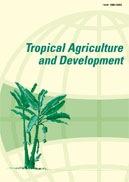Volume 57, Issue 4
Displaying 1-5 of 5 articles from this issue
- |<
- <
- 1
- >
- >|
Original Article
-
2013 Volume 57 Issue 4 Pages 109-113
Published: 2013
Released on J-STAGE: April 06, 2014
Download PDF (414K) -
2013 Volume 57 Issue 4 Pages 114-119
Published: 2013
Released on J-STAGE: April 06, 2014
Download PDF (574K) -
2013 Volume 57 Issue 4 Pages 120-125
Published: 2013
Released on J-STAGE: April 06, 2014
Download PDF (505K) -
2013 Volume 57 Issue 4 Pages 126-137
Published: 2013
Released on J-STAGE: April 06, 2014
Download PDF (711K)
Erratum
-
2013 Volume 57 Issue 4 Pages 138
Published: 2013
Released on J-STAGE: April 06, 2014
Download PDF (29K)
- |<
- <
- 1
- >
- >|
